Tonix Pharmaceuticals stock halted ahead of FDA approval news
Introduction & Market Context
Peakstone Realty Trust (NYSE:PKST) presented its first quarter 2025 investor presentation on May 8, 2025, highlighting the company’s ongoing strategic transformation from a diversified REIT to one focused primarily on industrial assets, with particular emphasis on the Industrial Outdoor Storage (IOS) subsector. The stock closed at $11.14, up 0.63% for the day, and is currently trading below its 52-week high of $16.26.
The presentation comes after Peakstone reported strong Q4 2024 results in February, with earnings per share of $0.35 exceeding analyst expectations of $0.33 and revenue reaching $58 million. The company’s strategic pivot toward industrial assets appears to be gaining momentum, with significant portfolio reshaping occurring in recent quarters.
Strategic Transformation
Peakstone’s presentation emphasizes its "Go-Forward Strategy" of becoming an industrial-focused REIT by growing its IOS portfolio, divesting office assets, and strengthening its balance sheet. The company has made substantial progress, increasing industrial segment ABR from 25% of total ABR in Q4 2023 to 41% in Q1 2025 (43% pro forma).
As shown in the following strategic overview slide, the company is executing a clear plan to transform its portfolio composition while managing leverage:
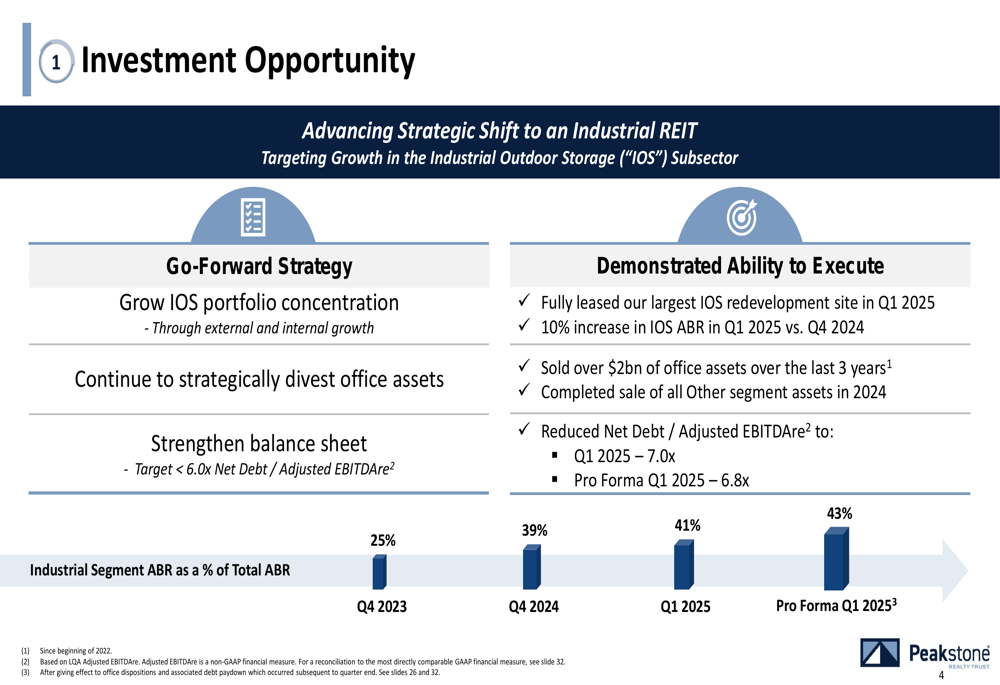
A cornerstone of this transformation was the November 2024 acquisition of a substantial IOS portfolio for $490 million, comprising 51 properties across 440 usable acres. The strategic rationale highlighted the compelling opportunity to create immediate scale in the fragmented IOS subsector, with assets concentrated in key Sunbelt and Coastal markets.
The company emphasizes several compelling characteristics of the IOS sector, including significant supply constraints, lower capital expenditure requirements, and a diverse tenant base of high-quality national and regional companies:
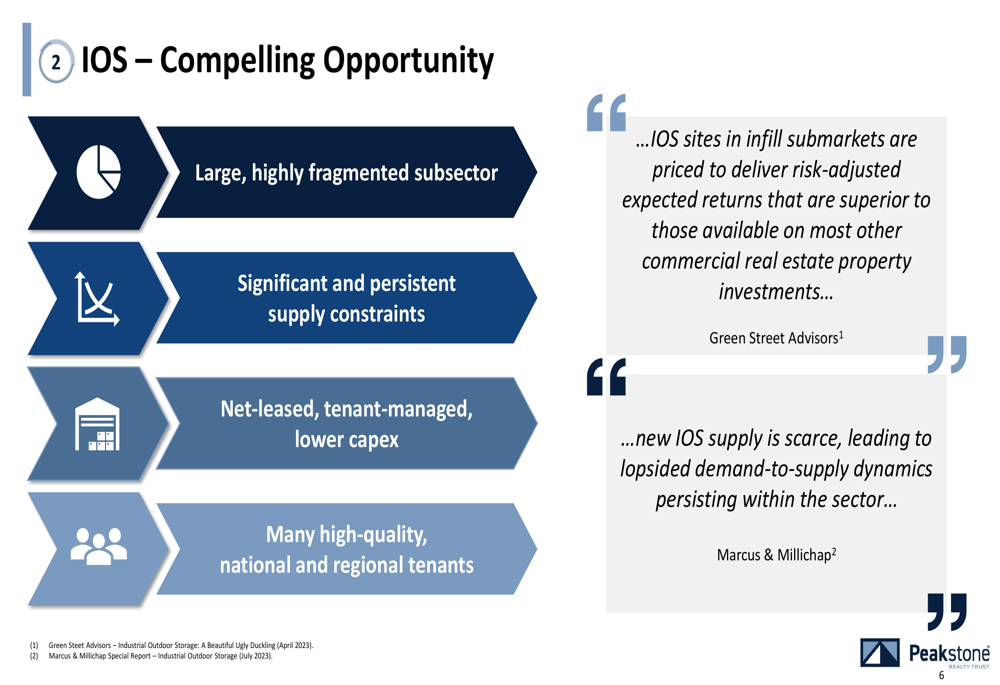
Portfolio Composition
As of Q1 2025 (pro forma), Peakstone’s portfolio consists of 98 properties: 70 industrial properties (51 IOS and 19 traditional industrial) and 28 office properties. The industrial segment now represents 43% of the company’s $172.8 million in-place annualized base rent (ABR), with office comprising the remaining 57%.
The following portfolio overview provides a comprehensive breakdown of Peakstone’s assets across segments:
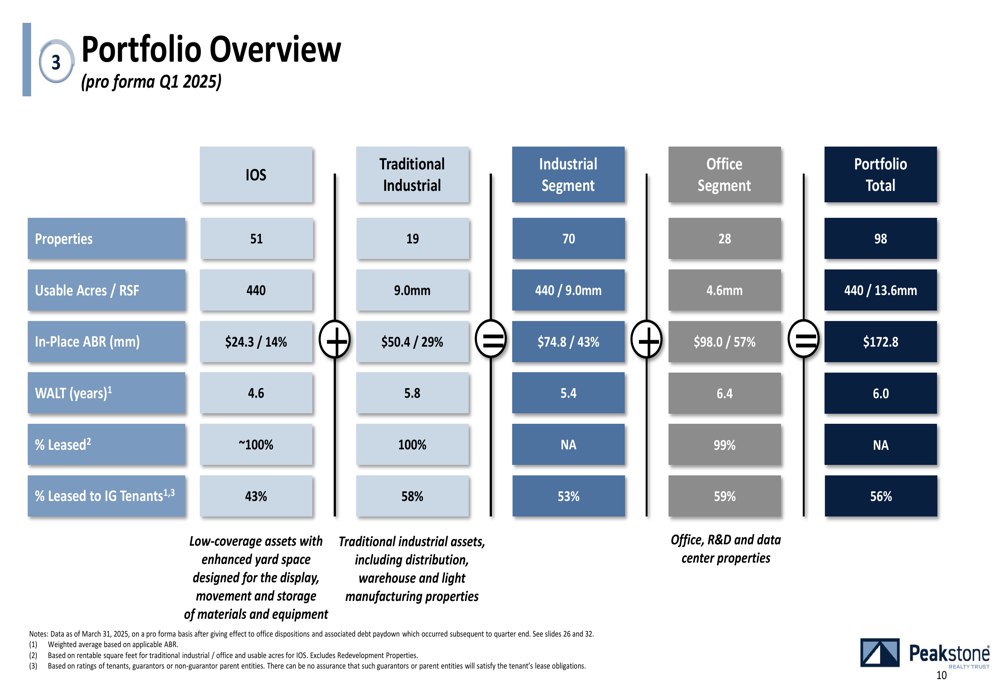
The company’s industrial portfolio is geographically diverse, spanning 19 states and 32 markets, with approximately 59% located in Coastal and Sunbelt regions and 51% being port-proximate. This strategic positioning aligns with e-commerce and logistics growth trends.
The following map illustrates the expansive, infill-focused industrial portfolio distribution:

Peakstone has cultivated a diversified tenant base across its industrial portfolio. Amazon (NASDAQ:AMZN) is the top industrial tenant, representing 13% of segment ABR, while Chicago stands as the top market with 1.3 million square feet of industrial rentable space:

Divestment Progress
Concurrent with its industrial expansion, Peakstone has been systematically divesting office properties to rebalance its portfolio. Since 2022, the company has closed over $2 billion in office asset sales across 30 markets, including $144 million year-to-date in 2025.
The following chart illustrates the consistent progress in office divestments:
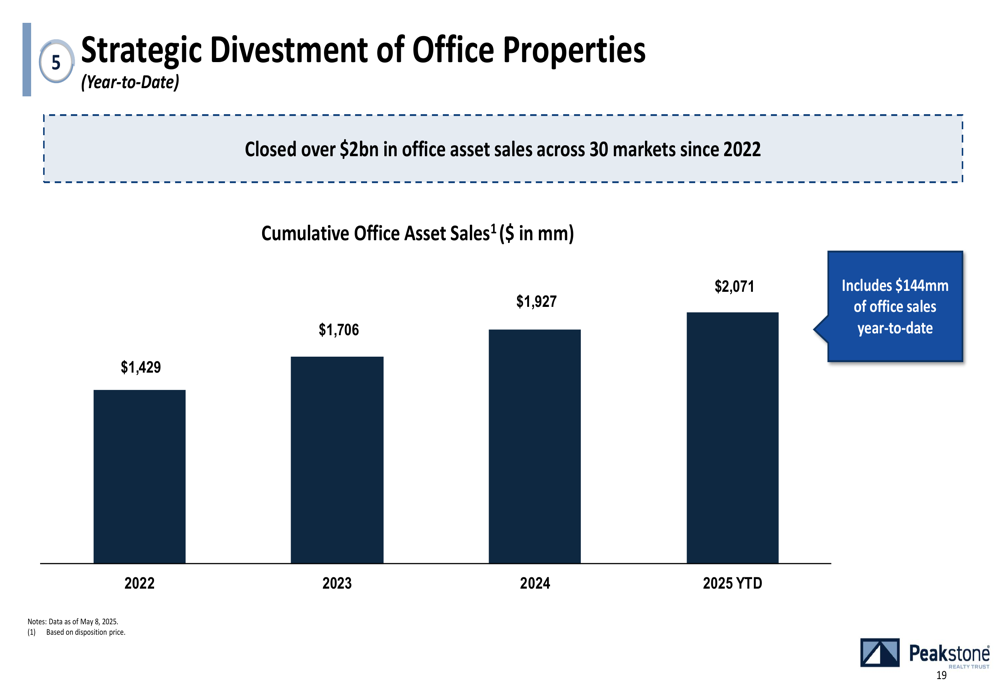
The company’s remaining office assets are characterized as "marketable," with 62% of ABR generated from corporate headquarters, 60% from S&P 500 companies, and 82% from properties with 4+ star ratings. These quality metrics should support continued divestment efforts at favorable valuations.
Financial Position
Peakstone’s capitalization structure reflects its transition strategy, with a focus on maintaining financial flexibility while pursuing growth. As of Q1 2025, the company reported a Net Debt to Adjusted EBITDAre ratio of 7.0x, improving to 6.8x on a pro forma basis after pending office dispositions. This approaches the company’s target of below 6.0x.
The following capitalization table provides a detailed breakdown of Peakstone’s financial position:
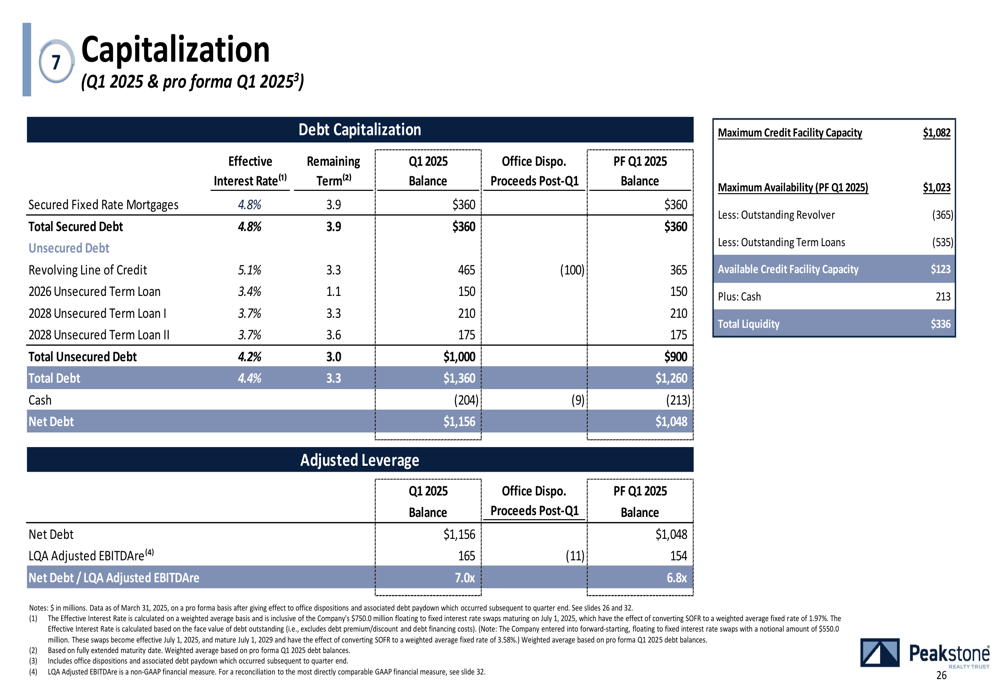
The company maintains strong liquidity with $336 million available (pro forma Q1 2025) and a favorable debt maturity profile with no maturities in 2025 and the majority (79%) not due until 2028, providing runway for its transformation strategy.
Redevelopment Highlights
Peakstone is also focusing on value creation through redevelopment of select properties. The company announced achieving 100% occupancy at its largest redevelopment property in Q1 2025, a 37-acre usable site with a 9.8-year lease term, generating an in-place cash yield of approximately 5.9% and GAAP yield of 8.8%.
The company’s redevelopment pipeline includes five IOS properties across 45 usable acres, targeting yields of 7.5-8.0%:
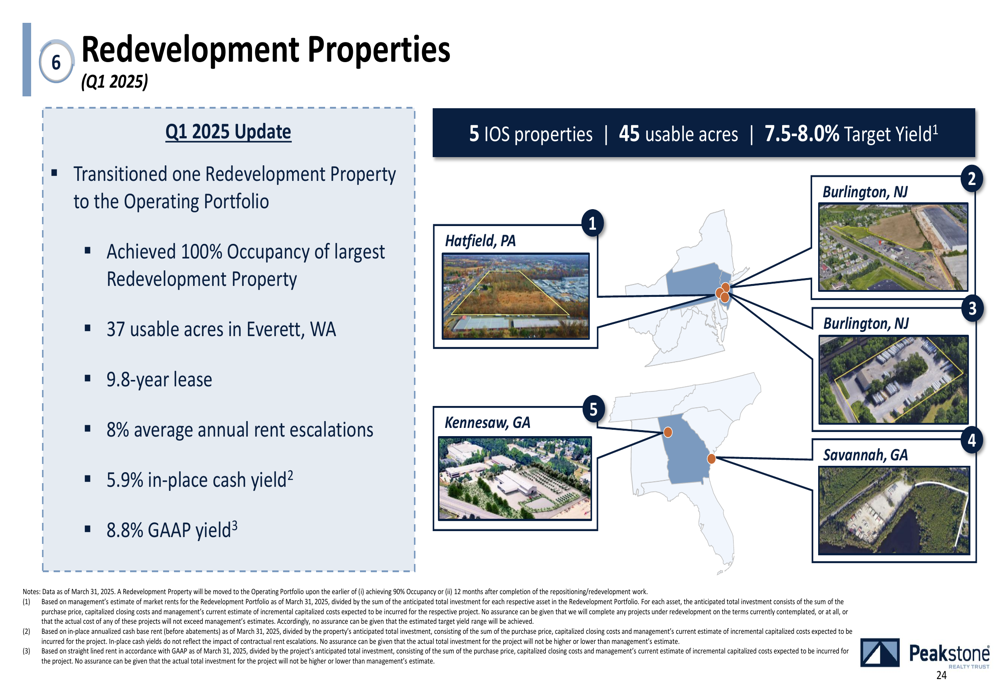
Forward-Looking Statements
Looking ahead, Peakstone’s management team, which includes IOS specialists and executives with an average of over 20 years of real estate experience, appears well-positioned to execute the company’s strategic transformation. The company is targeting continued growth in the industrial segment, particularly IOS, while further reducing its office exposure.
The industrial segment shows promising growth potential, with a blended mark-to-market opportunity of approximately 38% across the portfolio. For IOS specifically, the mark-to-market potential is even higher at 70%, suggesting significant embedded rent growth as leases expire and renew.
During Peakstone’s Q4 2024 earnings call in February, CEO Mike Pescolante expressed confidence in the company’s growth prospects and ability to reduce leverage. The Q1 2025 presentation indicates continued progress on both fronts, with industrial segment growth and leverage reduction tracking toward stated goals.
As Peakstone continues its transformation into an industrial-focused REIT, investors will be watching for continued execution on office dispositions, successful integration of IOS acquisitions, and progress toward target leverage metrics. The company’s strategic positioning in the fragmented IOS subsector, combined with its focus on high-growth markets, provides a potential pathway for long-term value creation.
Full presentation:
This article was generated with the support of AI and reviewed by an editor. For more information see our T&C.
